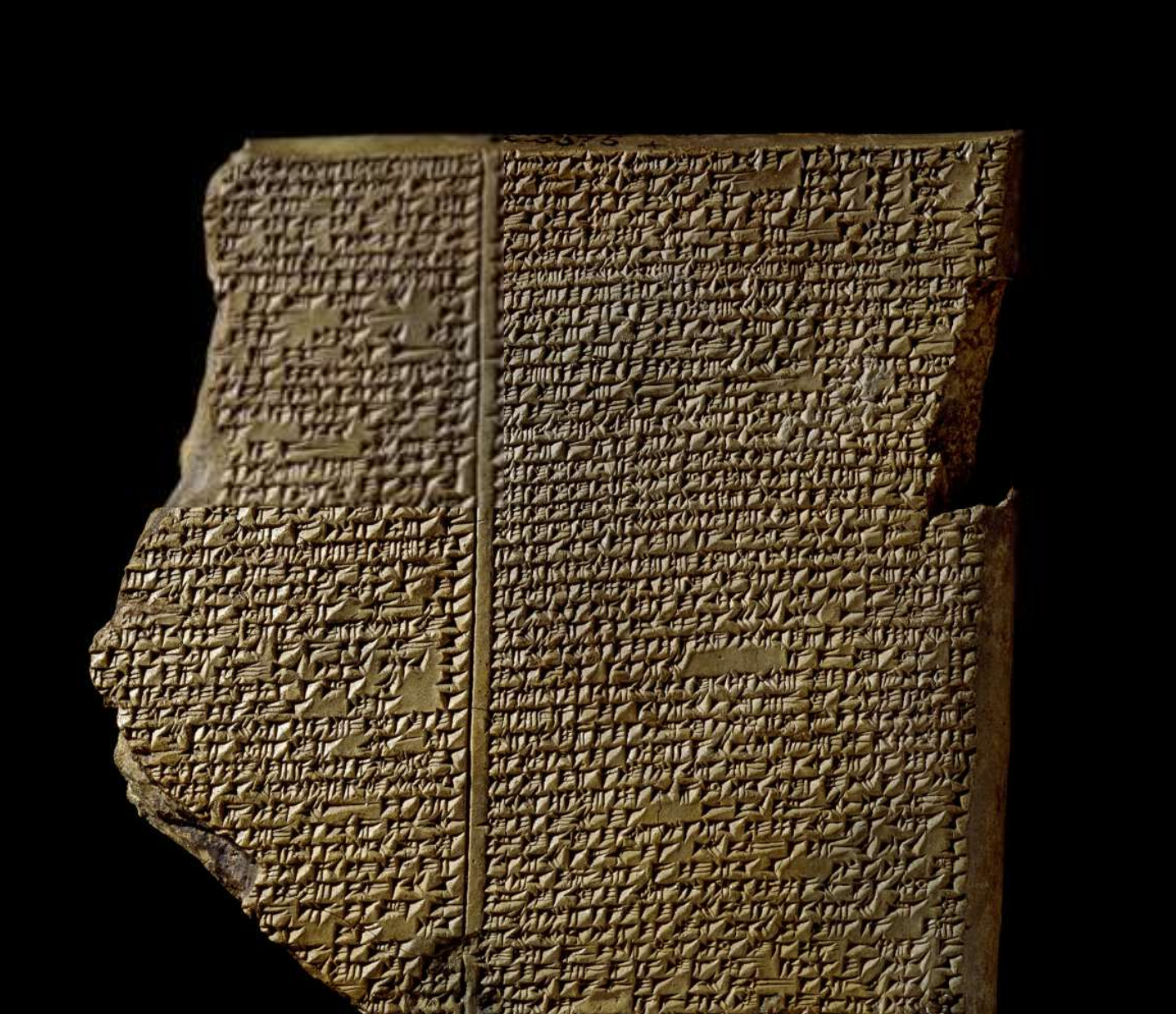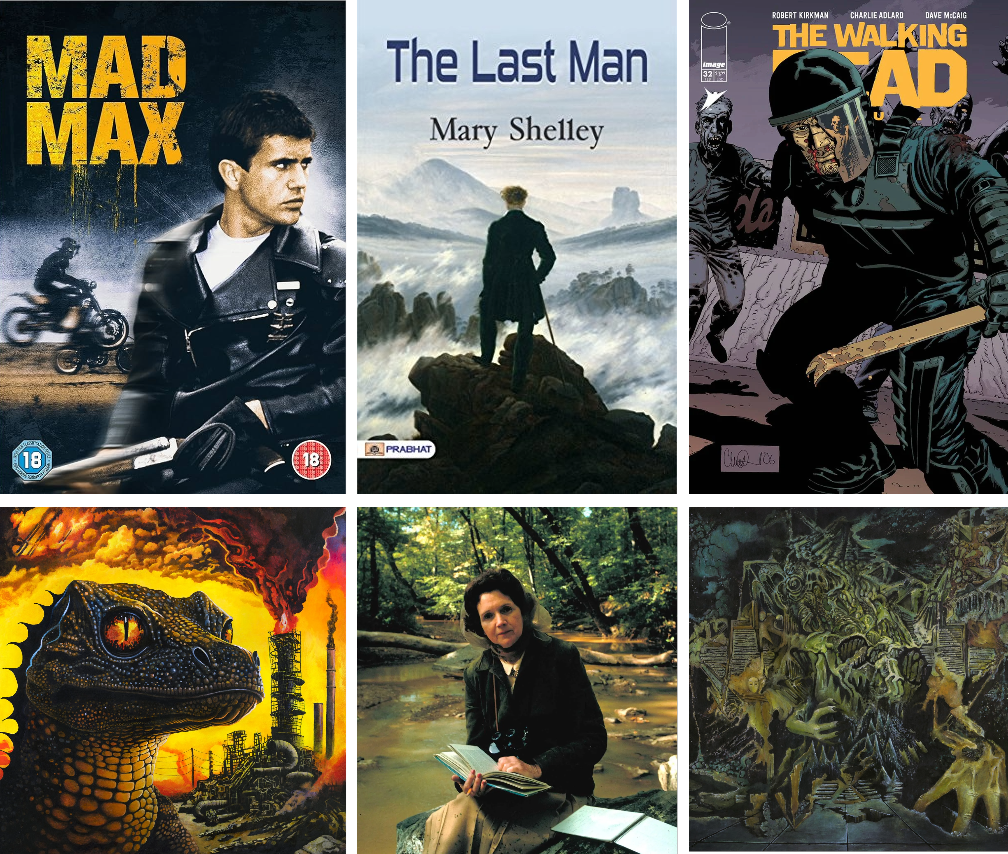
W.B.T.G. Slinger and AlteredBeef
How do you measure the truth of a story? You could set up some basic parameters of reality: people, places, sensations, and actions, laid out in a sequence of events in time. One leads to another, carrying effects that are given meaning by repetition, and you have a story. In this measure you could say that the truth is how many times you repeat the story before it measurably changes.
But what if we start with the imagination, intentionally choosing elements that break our boundaries of reality to form the story that we envision instead of one that has had to have ‘happened’, in other words, to 'make-believe'? Is one really less true than the other? With just a little repetition and imagination, the oral history becomes inseparable from the fantasy.
King Gizzard uses make-believe storytelling to great effect, more so than in most music, and this is the main element distinguishing the ‘Gizzverse albums’ from the rest. The fantastic battle between The Lord of Lightning and the demonic Balrog of Murder of the Universe, the mysterious wizard cult in Nonagon Infinity, the insane Venusian paratroopers of Infest the Rats' Nest: these are all characters and events conjured from the imagination; where other songs like “Work This Time”, “Persistence”, or “Her and I” are much more expressive and based on ‘real-world’ people, feelings, or places.
Their latest offering, PetroDragonic Apocalypse; or, Dawn of Eternal Night: An Annihilation of Planet Earth and the Beginning of Merciless Damnation, is deep in the realm of the Gizzverse, and for the first time heavily leans on many tropes and styles of the Fantasy literature genre. One of these is the presence of a Dragon, usually depicted as a large, winged, fire-breathing reptile, it has a rich history not only in Fantasy, but leading back through folklore, classical mythology, and even religion.
The word Dragon comes from the Greek ‘Drakos’ meaning ‘eye’. The association is thought to originate with the classical Greek story of Cadmus, one of the original dragonslayers, who came up against the beast guarding (watching) golden apples.
The Dragon persisted as a symbol of greed and guardianship into the earliest known English literature, notably in the epic poem Beowulf which ends with the titular hero fighting a Dragon to the death; in Dawn of Eternal Night, the cat responsible for triggering the gila monster’s transformation into the dragon is named Beowulf. The symbol has persisted through to the modern day, still with the tropes of protecting gold (Smaug in The Hobbit), or an innocent woman (Princess Fiona from Shrek).
But through the middle ages, the symbol of the Dragon gained popularity with another meaning: sin and paganism. This came from the Book of Revelation, the final book in the New Testament of the Christian Bible, where Satan is deemed ‘the great dragon’, or ‘that old serpent’. But to our modern ears, ‘revelation’ undersells what the book is about. As a word meaning something like ‘unveiling’ or ‘realization’, at the time it had an equivalent in Greek: ‘apokalypsis’, which through its attachment to the story has come to mean the end of the world, in this case brought on by the deceptive sin of Satan in the form of a Dragon.
It is a big deal to mythology and fantasy, and King Gizzard has always treated their evil reptilian association with relative subtlety, until now. So what exactly does ‘PetroDragonic’ apocalypse actually mean?
It is immediately clear that ‘eternal night’ is an apocalyptic event, likely the encompassing of Earth with black smoke, which makes the Dragon the source. Just about every appearance of the Dragon through the album links it as a symbol with humanity's lust for burning fossil fuels, not least in the music video for song “Dragon” itself, where it is depicted as a jet-like machine creature.
We are in the age of the Petrodragonic Apocalypse. Our world is choked with smoke. We tug our collars in the sweltering heat, daily threatened by new extremes. We have damned ourselves it seems. King Gizzard’s world of flames, witchcraft, and oil takes us within the smoldering wreckage and bizarre fanaticism that may come to be. Astute listeners not only imagine this weirdly possible future, but they hear an alarm blaring. For us, that siren means it’s not too late. Petrodragonic Apocalypse is borne from the same fire as other apocalyptic narratives meant to shock our eyes and ears. Through them we dwell in the altered future, recognizing it in our own lives. These stories of a world gone wrong have always helped us imagine the destruction that could ensue from a dangerous course. As far back as the epic of Gilgamesh (7th century BC) with its flood myth that convinced Uruk, the immortality-seeking protagonist, that he too can die, apocalyptic narratives have shown us our end and compelled us to change. (Note: The track on The Silver Cord called Gilgamesh).

These stories have carried us forward from the Biblical flood to the Norse poem of Voluspa where the world is consumed by rising waters and flame. H.G. Wells gave us The War of the Worlds, of alien invasion and a statement on anti-colonialism, Mary Shelley The Last Man, a story of plague survivors, and Cormac McCarthy The Road, of a world with barely enough left to sustain the few remaining. Our same fear and fascination of a grisly end is what draws us to The Walking Dead and World War Z or the desperation of Mad Max or The Handmaid’s Tale.

King Gizzard have dealt with stories of desperation and warning before. Murder of the Universe and Infest the Rats' Nest both have taken us into worlds of carnage that implore us to change. Yet it is this latest album that screams most loudly the same sentiment recently declared by United Nations Secretary General Antonio Guterres when he said, “the era of global boiling has arrived.”
In “Flamethrower”, the dragon sings “I drink lakes of motor oil/I engulf and I inflame/I disrupt the natural order.” In three staccato lines they set the foundation of their vision of the apocalypse. Our human overconsumption and shortsighted action have broken the great chain of being. In other words, we “follow the impetuous and heedless pace of man rather than the deliberate pace of nature.” These are the words of Rachel Carson, another master of the apocalyptic narrative.
In her 1961 book Silent Spring, Carson raised the alarm on the “chemical death-rain” from the pesticide dichlorodiphenyltrichloroethane (DDT) used to control malaria and other insect-borne illnesses. This was sprayed everywhere and onto everyone, touted as harmless, yet many knew it for the poison it was. DDT most famously nearly wiped out bald eagles, thinning their eggshells so that they could not carry baby birds to term. Humans also suffered reproductive issues, and cancer, too. Carson knew this had to be stopped.
Carson did it by constructing a twisted vision of readers’ familiar world. She shocked them not with fiery death but silence. She invoked a world of stillness and quiet after the poison death of all creatures. The reckless “would-be architects of our future” were already doing it, but by her apocalyptic vision she stopped them. She raised enough concern to lead to the founding of the Environmental Protection Agency in the United States and the banning of DDT in 1972. This shows the power of apocalypse to wake us to reality.
You hear Petrodragonic Apocalypse, but what are you going to do?
While they share visions of the dystopian future, King Gizzard offers plenty of warning from the brink. Consider "If Not Now, Then When?". This song only works because in this present timeline at this particular moment, there is still hope.
We are teetering on the tipping point, but can we keep ourselves from plummeting with no parachute at all? Here, King Gizzard provides imagery of the apocalypse much like Rachel Carson’s. Death, disease, and ensuing silence. She writes, “The few birds seen anywhere were moribund; they trembled violently and could not fly. It was a spring without voices.” That silence is what replaces the business of biology when our human inability to act destroys all life.
One of the biggest frustrations about our climate crisis is the inaction of our politicians, the ones who should be making our long-term survival a top priority. In the United States, it feels that election cycles are too frequent for vote-mongering politicians to focus on a threat that is nebulous and hard to pin down. Things are not so different in Australia, where since 2007, due to various inter-party leadership spills, no Prime Minister managed to serve a full term until 2022.
Putting Petrodragonic Apocalypse into conversation with Rachel Carson’s Silent Spring can help us see that despite the hopelessness that we may feel, change can happen when enough people demand it. In order to raise those voices, we first need people to give a shit. Telling them straight that the world is dying through scientific reports, news features, and political speak just isn’t getting through. We need scare tactics. We need to fear for our future so that we fight for it. We need that spark of the imagination powerful enough to create worlds, and we need to ask ourselves where will we get it?